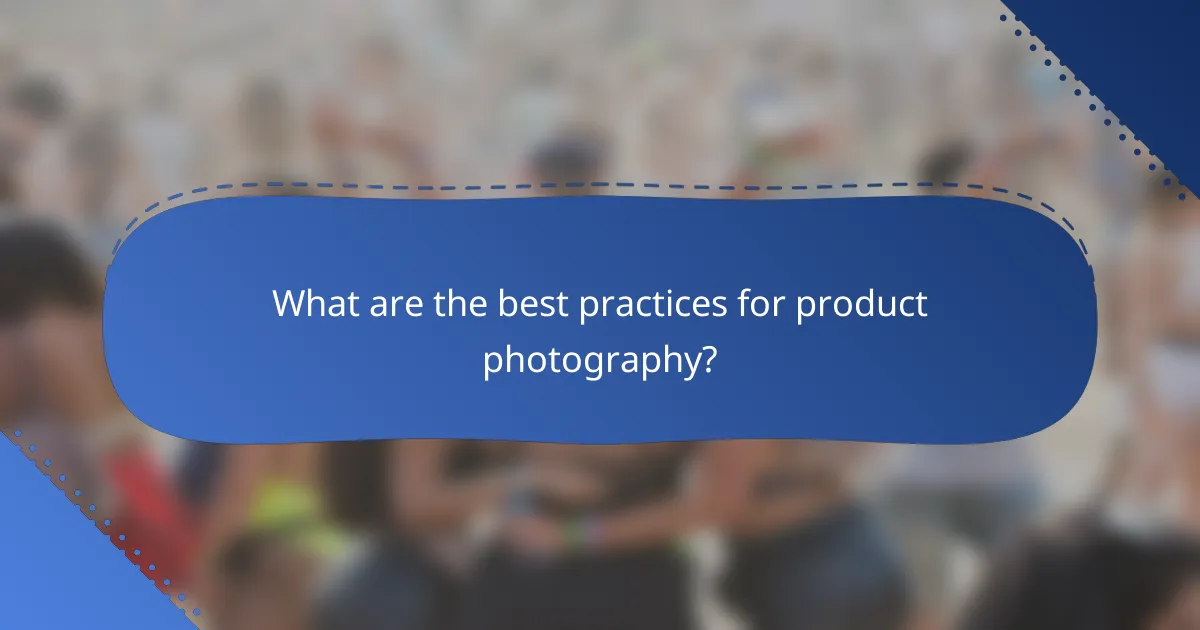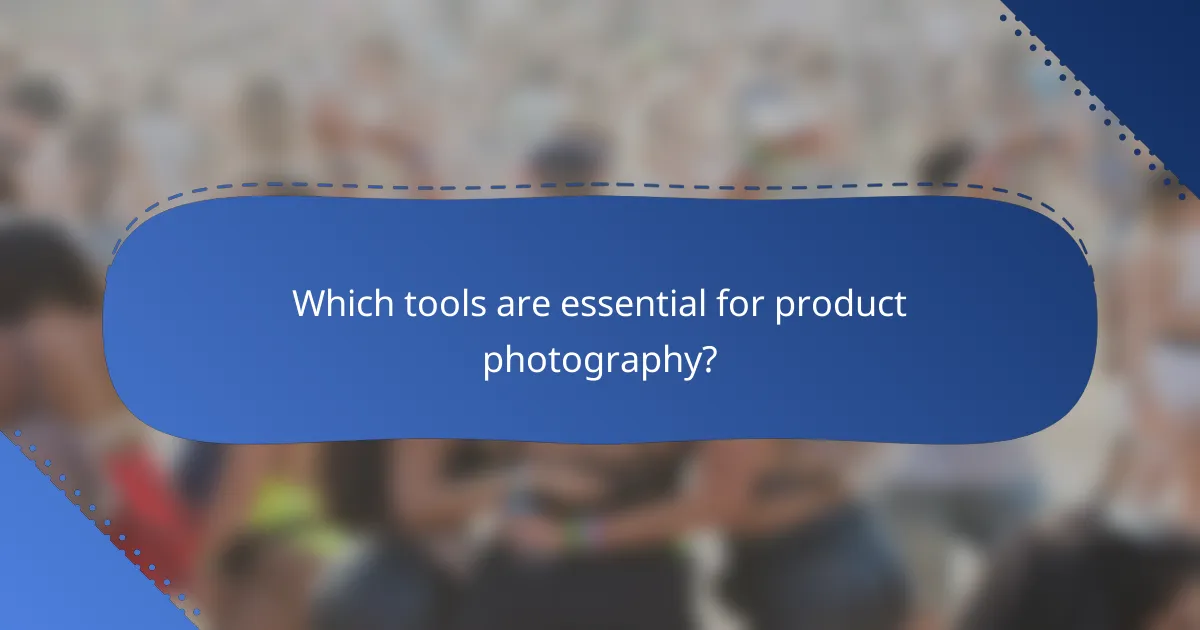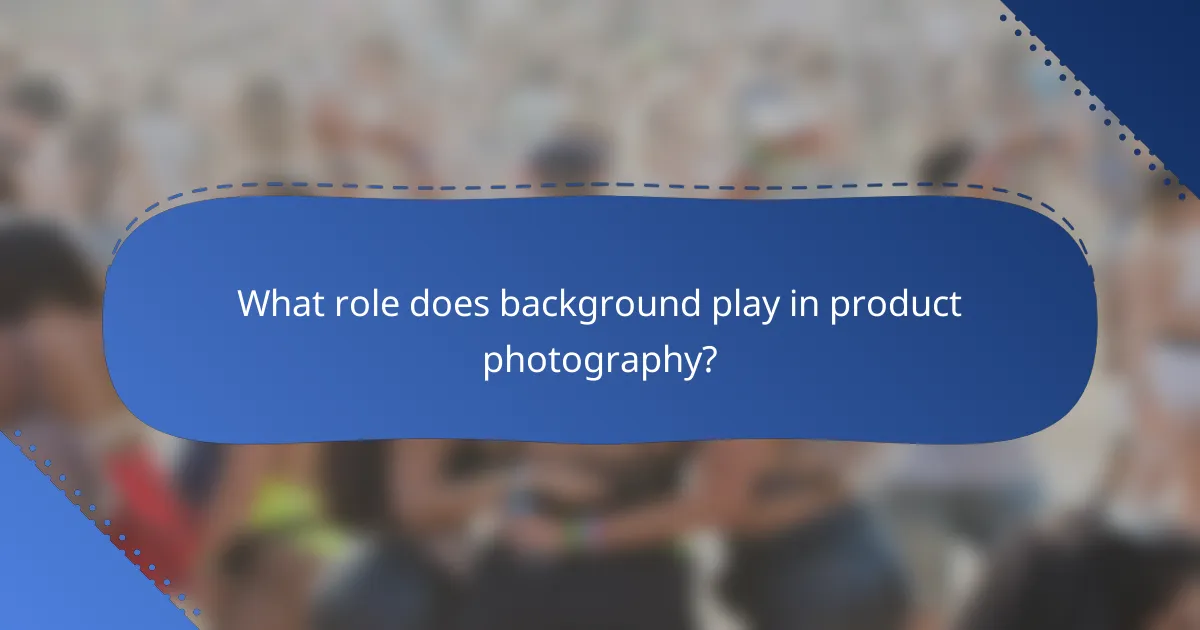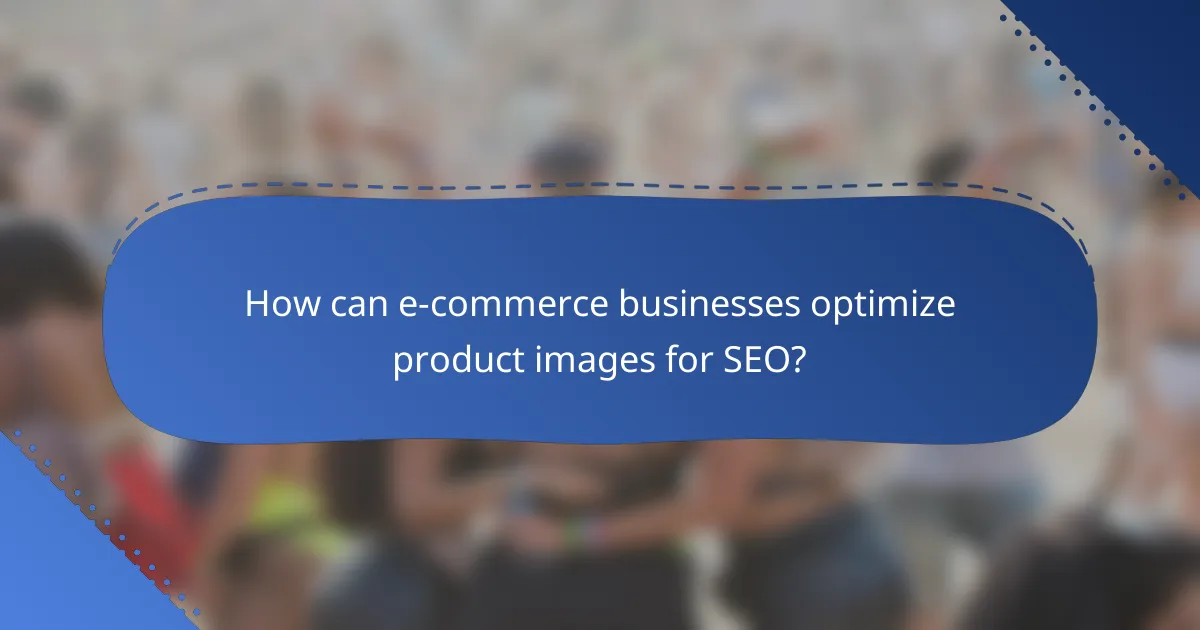Product photography plays a crucial role in e-commerce by creating an engaging visual experience that attracts potential buyers and enhances their purchasing decisions. By employing best practices such as natural lighting, multiple angles, and high-resolution images, businesses can significantly improve visual appeal and conversion rates, ultimately driving sales and customer satisfaction.

How does product photography enhance e-commerce sales?
Product photography significantly boosts e-commerce sales by creating an engaging visual experience that attracts potential buyers. High-quality images help customers make informed purchasing decisions, leading to increased sales and customer satisfaction.
Increases visual appeal
High-quality product photography enhances the visual appeal of online listings, making products more attractive to potential buyers. Clear, well-lit images that showcase products from multiple angles can captivate customers and encourage them to explore further.
Consider using lifestyle images that depict products in real-life scenarios. This approach helps customers visualize how the product fits into their lives, increasing the likelihood of a purchase.
Boosts conversion rates
Effective product photography can significantly boost conversion rates by providing customers with the confidence they need to complete a purchase. Research shows that consumers are more likely to buy products that are presented with high-quality images, as these images reduce uncertainty about the product’s appearance and quality.
To maximize conversion rates, ensure that images are optimized for fast loading times and are responsive across devices. Aim for images that load in low tens of milliseconds to maintain user engagement.
Builds brand trust
Professional product photography helps build brand trust by conveying a sense of quality and reliability. When customers see well-produced images, they are more likely to perceive the brand as credible and trustworthy.
To further enhance trust, consider including customer reviews alongside product images. This combination of visual appeal and social proof can significantly influence purchasing decisions and foster long-term customer loyalty.

What are the best practices for product photography?
The best practices for product photography focus on enhancing visual appeal and improving conversion rates. Key strategies include using natural lighting, incorporating multiple angles, and utilizing high-resolution images to showcase products effectively.
Use natural lighting
Natural lighting is crucial for capturing the true colors and details of a product. Aim to shoot during the day when sunlight is abundant, preferably near a window or outdoors, to avoid harsh shadows and overly bright spots.
When using natural light, consider the time of day. Early morning or late afternoon provides softer light, which can enhance the product’s appearance. Avoid direct sunlight, as it can create glare and distort colors.
Incorporate multiple angles
Displaying products from multiple angles gives potential buyers a comprehensive view, helping them make informed purchasing decisions. Include front, back, side, and top views, as well as close-ups of important features.
Consider using a rotating platform for consistent angles or a tripod to maintain stability. This approach not only showcases the product effectively but also builds trust with customers by providing transparency.
Utilize high-resolution images
High-resolution images are essential for e-commerce as they allow customers to zoom in and see details clearly. Aim for images with at least 1000 pixels on the shortest side to ensure clarity across various devices.
Keep in mind that file size matters; optimize images for web use to balance quality and loading speed. Use formats like JPEG or PNG, and consider compressing images without sacrificing quality to enhance user experience.

Which tools are essential for product photography?
Essential tools for product photography include a high-quality camera, editing software, and proper lighting equipment. These tools enhance the visual appeal of products, which is crucial for driving e-commerce sales and improving conversion rates.
Canon EOS R5 camera
The Canon EOS R5 is a top-tier mirrorless camera known for its impressive image quality and versatility. It features a 45-megapixel sensor, allowing for detailed product shots that can capture textures and colors accurately.
When using the EOS R5, consider pairing it with a suitable lens, such as a macro lens for close-up shots. This combination helps in showcasing intricate details of products, which can significantly influence customer purchasing decisions.
Adobe Lightroom software
Adobe Lightroom is a powerful editing software that allows photographers to enhance their images post-capture. It provides tools for adjusting exposure, color balance, and sharpness, which are essential for creating visually appealing product photos.
Utilizing Lightroom’s batch processing feature can save time when editing multiple images. Aim to maintain consistency across your product images to establish a cohesive brand aesthetic, which can help improve customer trust and conversion rates.
Lightbox for controlled lighting
A lightbox is an essential tool for achieving controlled lighting in product photography. It minimizes shadows and highlights, ensuring that products are well-lit and visually appealing without harsh contrasts.
When using a lightbox, position your products centrally and experiment with different light sources to find the best setup. This approach can enhance the overall quality of your images, making them more attractive to potential buyers.

What role does background play in product photography?
The background in product photography is crucial as it influences how the product is perceived by potential buyers. A well-chosen background can enhance the product’s visibility and align with the brand’s identity, ultimately affecting conversion rates.
Enhances product visibility
A suitable background helps the product stand out, making it easier for customers to focus on the item being sold. For instance, a light-colored product may benefit from a darker background to create contrast, while vibrant items can be showcased against neutral tones to avoid distraction.
When selecting a background, consider using solid colors or subtle textures that complement the product without overwhelming it. Avoid busy patterns that can divert attention away from the item. A simple rule is to ensure the background is at least one or two shades different from the product color.
Sets the mood for the brand
The background also plays a significant role in conveying the brand’s message and mood. For example, a rustic wooden backdrop can evoke a sense of warmth and authenticity for handmade products, while a sleek, modern background may suit high-tech gadgets.
To effectively set the mood, align the background with your brand’s identity and target audience. Consider the emotional response you want to elicit. For luxury items, a minimalist, elegant background can enhance perceived value, whereas a playful, colorful background may work better for children’s products.

How can e-commerce businesses optimize product images for SEO?
E-commerce businesses can optimize product images for SEO by focusing on descriptive file names, effective alt text, and image size optimization. These strategies enhance visibility in search engines and improve user experience, ultimately driving more traffic and conversions.
Use descriptive file names
Descriptive file names help search engines understand the content of your images. Instead of generic names like “IMG1234.jpg,” use specific terms that reflect the product, such as “red-leather-handbag.jpg.” This practice can improve your chances of ranking higher in relevant searches.
When naming files, consider including keywords that potential customers might use. For example, if you sell eco-friendly products, a file name like “biodegradable-phone-case.jpg” can attract the right audience. Keep file names concise but informative, ideally under 60 characters.
Implement alt text effectively
Alt text serves as a textual description of images, aiding both SEO and accessibility. Search engines use alt text to index images, so including relevant keywords can enhance your product’s visibility. Aim for clear, descriptive phrases that accurately depict the image.
For instance, instead of using “handbag,” use “small-red-leather-handbag-with-gold-hardware.” This not only improves SEO but also provides context for visually impaired users. Keep alt text under 125 characters to ensure it is fully displayed by screen readers.
Optimize image size for faster loading
Image size optimization is crucial for website performance and user experience. Large images can slow down page loading times, leading to higher bounce rates. Aim for images that are under 100 KB without sacrificing quality, using formats like JPEG for photographs and PNG for graphics.
Utilize tools like image compressors to reduce file sizes while maintaining visual integrity. Additionally, consider using responsive images that adapt to different screen sizes, ensuring fast loading on both desktop and mobile devices. This approach can significantly enhance user engagement and conversion rates.

What are the costs associated with professional product photography?
The costs of professional product photography can vary significantly based on factors like location, the photographer’s experience, and the complexity of the shoot. Generally, businesses should budget for freelancer fees, studio rental costs, and equipment investments to ensure high-quality images that enhance e-commerce sales.
Freelancer fees
Freelancer fees for product photography typically range from $50 to $300 per hour, depending on the photographer’s expertise and the project’s demands. Some photographers may offer package deals, which can provide savings for larger projects or multiple products.
When hiring a freelancer, consider their portfolio and client reviews to gauge their style and reliability. It’s advisable to discuss your specific needs upfront to avoid unexpected costs later.
Studio rental costs
Studio rental costs can range from $50 to $500 per day, influenced by the studio’s location and amenities. High-end studios in major cities may charge more, while smaller or shared spaces can be more budget-friendly.
When renting a studio, factor in additional costs such as lighting equipment and backdrops, which may not be included in the base rental fee. Always confirm what is provided and what you need to bring to avoid overspending.
Equipment investment
Investing in photography equipment can be significant, with basic setups costing anywhere from $1,000 to $5,000. This includes a quality camera, lenses, lighting, and props, all essential for achieving professional results.
If you’re just starting, consider renting equipment to keep initial costs lower. As your business grows, gradually invest in high-quality gear that meets your specific photography needs.
